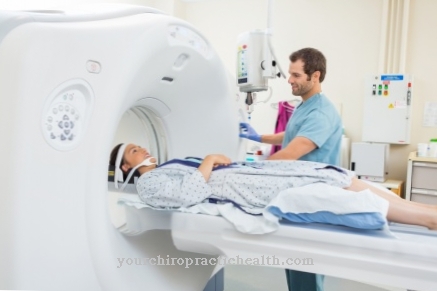The Stem cell therapy has been used increasingly in medicine for a number of years and is also becoming increasingly important in research. It is primarily used to treat certain diseases, such as cancer. Stem cell therapy is therefore playing an increasingly important role in medicine.
What is stem cell therapy?

From Stem cell therapy one speaks when stem cells are used in the treatment of certain diseases. These stem cells are cells that are not yet specialized in certain tasks and functions in the body.
Different cell types can develop from them. This property of stem cells is deliberately used in stem cell therapy. Stem cells are taken from the tissue in order to convert and reproduce them by adding certain substances so that they can then take on the desired function in the body.
Stem cell therapy is currently being researched further. Stem cell therapy is already established for some diseases. However, the researchers still see great potential in stem cell research, which is to be further developed with the help of biomedicine.
Function, effect, application & goals
The Stem cell therapy could soon expand to more and more areas of application, as medical research in this area is currently very active. When it comes to stem cells, a distinction is first made between embryonic and adult stem cells.
The embryonic stem cells can develop into all cell types, the adult stem cells can only be differentiated to a limited extent and do not divide as quickly as the embryonic stem cells. The embryonic stem cells thus offer more possibilities for stem cell therapy. However, the higher rate of division also increases the risk of undesirable effects, such as the development of tumorous cells.
Research on embryonic stem cells or stem cell therapy is also not entirely undisputed within society. In Germany, the majority of society ethically rejects the idea that human embryos have to be destroyed in order to obtain embryonic stem cells. This is why there are strict legal requirements for stem cell therapy. At the moment only research is being carried out in the field of embryonic stem cells, stem cell therapy predominantly takes place with adult stem cells.
Stem cell therapy is used, among other things, in cancer therapy. Here it has been used successfully in the past decades, especially in the treatment of leukemia and lymphoma. The stem cell therapy takes place here by means of a stem cell transplant from the bone marrow. For this purpose, stem cells are obtained from a donor's bone marrow and fed to the sick person. Before this, the tumor cells were largely destroyed by radiation or chemotherapy.
The injected stem cells have a blood-building function and produce new white and red blood cells. This replaces the diseased cells that are still present with healthy ones and the leukemia can be cured. Other possible uses for stem cell therapy are to be found in Parkinson's disease and spinal injuries.
Stem cell therapy has already been used successfully in some studies, especially in cases of paralysis. Stem cell therapy should also be used for heart attacks and multiple sclerosis to support regeneration by renewing the cells. Research is still going on in this area, but medicine hopes that stem cell therapy will provide new treatment approaches.
Risks, side effects & dangers
As with most therapies and drugs, there is also the Stem cell therapy Risks and Side Effects. Since stem cell therapy is a relatively new process and is still being researched, long-term studies are not yet available for all forms of treatment.
It is true that a large number of studies and experiments on stem cell therapy have been carried out in recent years and have proven to be quite promising.Nevertheless, in the case of new treatment routes within stem cell therapy, the benefit and risk should always be weighed up against each other with the treating physician in order to avoid possible side effects of stem cell therapy.
In particular, stem cell therapy, which is carried out in countries with less strict requirements for experimental medicine and which promises a quick cure for serious diseases, is urgently not recommended. The risk of severe side effects and long-term consequences of such stem cell therapy is significantly increased here.












.jpg)



.jpg)










.jpg)
